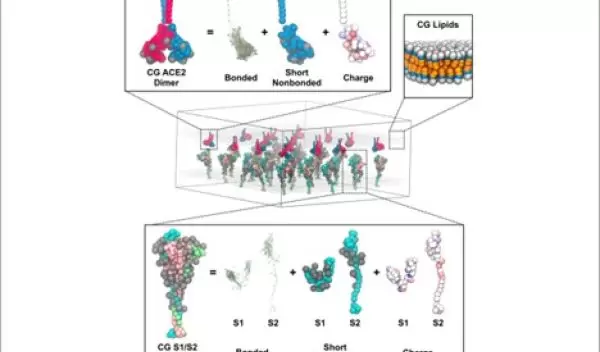
Researchers simulate coronavirus invasion and infection, find cooperative host cells
A team of scientists, supported in part by an award from the U.S. National Science Foundation, used supercomputers at the Texas Advanced Computing Center to simulate a coronavirus infection -- and discovered cooperative behavior in host cell receptor proteins that allow infection instead of resisting it. The findings reveal the possible mechanism that fuses the virus to host cells.
"We discovered that the spike protein interacts with two ACE2 receptors in a very cooperative fashion," said Gregory Voth, senior author of the study. "This is a fundamental biophysical insight."
The team created models using cryo-electron tomography data and combined the data with atomistic coarse-grained molecular dynamics. "The coarse-grained models are up to 1,000 times faster than straight-up atomistic molecular dynamics simulations, but they retain the essential physical features," Voth said.
The simulations showed a coronavirus spike attached to a receptor protein being pulled apart by other receptor proteins, allowing the virus to fuse with the human host lung cells.
"It appears that variants such as delta and omicron may accentuate that behavior even more -- it's a key step,” said Voth. “Future antibodies and possibly molecular pharmaceuticals should be able to interfere with this process.”
Since publishing the research, the team has revised the models to examine and analyze the increased virulence of coronavirus variants such as delta and omicron.


